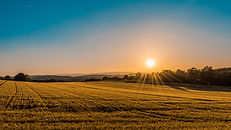
Water Buffalo

Water Buffalo
-
Background: Water buffalo, mainly river and swamp buffalo, were imported to Australia in the 19th century, to supply meat to remote northern settlements. The settlements and their buffalo were abandoned in 1949 and the buffalo spread across the northern floodplains of Northern Territory.Impacts: The feral buffalo are a major environmental disaster in the wetlands of the top end of the Northern Territory. When the population was at it highest, from the 1960s to the 1980s, the feral buffalo grossly altered the northern floodplains, with wallows, trails, dung, trampling and disturbance, it caused soil erosion, channelling of floodwaters, increased intrusion of saltwater into freshwater habitats and destruction of wetland vegetation. These effects were worse during dry periods when animals concentrated at receding water. Many native wetland flora and fauna failed to thrive in the muddied or salt-polluted water. They also suffered from the disturbance and loss of cover. Crocodiles, barramundi, freshwater turtles and other native species declined, and many waterbirds, including magpie geese, lost their habitat. Feral buffalo eat large volumes of grasses and other plants, removing this food source for native wildlife, and they can damage the trees they regularly rub against. Their trampling and soil disturbance also promotes the spread of weeds across the landscape. Feral buffalo can carry diseases of cattle, particularly tuberculosis and brucellosis.
-
Impacts: The feral buffalo has been a major environmental disaster in the wetlands of the top end of the Northern Territory. When the population was at it highest, from the 1960s to the 1980s, the feral buffalo grossly altered the northern floodplains, with wallows, trails, dung, trampling and disturbance, it caused soil erosion, channelling of floodwaters, increased intrusion of saltwater into freshwater habitats and destruction of wetland vegetation. These effects are worse during dry periods when animals concentrate at receding water, many native wetland flora and fauna fail to thrive in the muddied or salt-polluted water and they also suffer from the disturbance and loss of cover. Crocodiles, barramundi, freshwater turtles and other native species decline, and many water birds, including magpie geese, lose their habitat. Feral buffalo eat large volumes of grasses and other plants, removing this food source for native wildlife, and they can damage the trees they regularly rub against. Their trampling and soil disturbance also promotes the spread of weeds across the landscape. Feral buffalo can carry diseases of cattle, particularly tuberculosis and brucellosis.